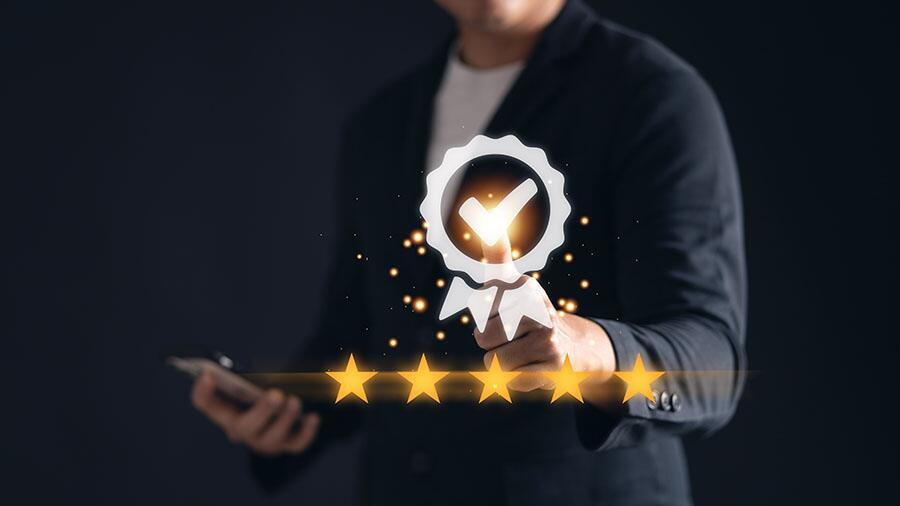
In a connected world, where competition is fierce and consumer choices are abundant, word-of-mouth travels at the speed of a click. Doing product research is as simple as scrolling through a page of search results. In fact, consumers can often log onto social media and find direct testimonials, often from influencers and personalities they trust.
But let’s say your engaging marketing strategy helps you cut through the noise and convert a lead. How do you keep them coming back for more?
The secret is fostering customer loyalty.
Building enduring relationships with customers is the key to driving repeat business and fostering growth. In this blog, we’ll explore the role of customer service, personalization, and incentives in driving repeat business. You’ll understand how to convert satisfied, engaged customers into enthusiastic marketing tools who spread your message for you.
Continue reading to learn how small and medium businesses keep their best customers coming back.
Understanding Customer Loyalty
Loyal customers aren’t just familiar faces. Repeat business can have a major impact on your bottom line.
According to Harvard Business Review, it costs up to 25% more to attract new customers than it does to retain a loyal one. Not only that but, per Forbes, you’re 14 times more likely to sell to an existing customer than a new one. A study even found that your repeat customers are 50% more likely to try a new product or service compared to a new customer—and will spend up to 31% more.
Needless to say, an investment in customer loyalty initiatives is essentially an investment in your business as a whole.
Loyal returning customers:
- Lack interest in your direct competitors
- Engage with your brand across social media channels
- Advocate for your products or services, often without incentives
- Provide thoughts and opinions about your products and services
- Generate UGC (user-generated content), which is a powerful marketing tool
- Have an emotional connection to your brand
It can be helpful to think of a customer’s loyalty as a reward for crafting an engaging and personalized customer experience. This is why we’ve emphasized knowing your ideal customer so frequently throughout this guide. Customers who feel like your marketing is speaking directly to them and their desires are more likely to respond… and stick around for the rest of the conversation.

Strategies for Building Customer Loyalty
You can incorporate strategies for building customer loyalty into your marketing plan. Often, following the best practices in the industry yields repeat business. Below, we’ll explore a few customer loyalty examples and how to emulate them in your business.
Providing exceptional customer service
One customer loyalty example is the skincare business Lush, which inspired repeat purchasing through superlative customer service. Upon entering the business, customers are approached and provided with personalized recommendations. This instantly builds an emotional connection between the shopper and the brand.
Likewise, consider the way Disney approaches customer service. As marketing expert Neil Patel writes, not only do they ensure “everyone’s a princess,” but they go above and beyond to rectify issues. Suddenly, a small inconvenience is transformed into a magical experience that exceeds all expectations. Customers don’t remember the problem, they remember the sparkly solution—and they come back for more.
While you can’t make every customer the star of a parade down Main Street, personalized and responsive customer service goals a long way. Prove you care about your customers, and they’ll begin caring about your brand.
Personalization and customization
Every so often, you receive a marketing email with a subject line like “We think you’ll love this.” Inside, there’s an image of a product or two—and you do love it. That’s because the brand used your past purchases to generate an email catered to your preferences. A study from McKinsey & Company suggests that brands that prioritize personalization generate 40% more revenue.
Make use of your customer data and AI tools to ensure you’re delivering the personalized experiences that customers expect.
Loyalty programs and incentives
Just as loyalty is a reward for a brand’s customer service, incentives are a reward for a customer’s loyalty. If you provide incentives for repeat purchases, customers are more likely to come back for more. Consider coffee brands with in-app rewards programs, like Dunkin’ or Starbucks.
Loyalty apps, punch cards, email coupons, and bonus gifts keep your brand at the top of customer’s minds. When you make customers feel valued, they quickly become repeat customers.
Active communication and engagement
It takes a lot of effort to convert a lead for the first time, but there is value in the quality of communication after the first sale.
The way you follow up matters. For example, clothing brand Quince sends out a follow-up email after a customer orders a garment with special care instructions. Upon a return trip, rideshare company Uber immediately sends an email suggesting they order from their Uber Eats service.
Focus on their satisfaction, and ensure you have channels that allow customers to provide feedback. This creates opportunities for your satisfied customers to advocate for your brand. You can even further incentivize this feedback with discounts on future purchases. Suddenly, you have UGC to leverage, positive reviews, and repeat customers.
Measuring and Tracking Customer Loyalty
Finally, how do you know your customer loyalty strategy is working? You should familiarize yourself with the following key metrics, which can help you adjust your strategy as you go.
- Customer Retention Rate: How many customers you keep over a specific period
- Net Promoter Score: How likely customers are to recommend your brand to others
- Customer Lifetime Value: The total revenue a customer generates throughout their relationship with your business
- Repeat Purchase Rate: How often customers make repeat purchases
Are you ready to improve these metrics and put customer loyalty to work for you?
Learn more about running a small business by attending one of our Business Conferences near you.
